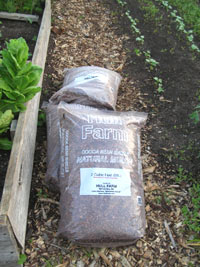

Anyone who's spent any time in urban areas knows that they create their own microclimate. Many of us learned as kids about asphalt's ability to heat up in summer. Whether chasing a ball from the cool grass to the scorching street or walking across a hot parking lot, we learned that the street is much hotter than the dirt or lawn. This extra heat absorbed and radiated by masses of concrete and asphalt is called the heat island effect. While in all seasons the temperature is usually warmer in a city than in the surrounding areas, this effect is especially pronounced in summer.
In nature, cold-blooded creatures like lizards and snakes take advantage of the heat from rocks and stones to raise their body temperature. Buildings and roads are like huge heat-absorbing rocks. The concrete and asphalt absorb heat radiation from the sun and release it back into the air, raising the temperature even further.
Contributing to the heat island effect is the scarcity of plants in the urban landscape. Surfaces covered with plants are always cooler than stone, asphalt, or concrete. Plants cool themselves and the surrounding air through transpiration (the evaporation of water from pores in the leaves). Areas with lots of vegetation release lots of water to help reduce heat. That's why grass feels cool and moist even on a hot day.
In addition to the concrete and asphalt, there is a lot of extra energy released in a city. The motors of cars, trucks, and trains produce heat. The exhaust from those vehicles and other machines are greenhouse gases that help to trap the heat. Plus tens of thousands of streetlights, televisions, phone chargers, computers, and other electrical appliances cumulatively add more heat to the mix.
All these factors combined can significantly change the climate. The city can be five to ten degrees warmer than the suburbs. For instance, Chicago generally experiences its first frost around mid October. However, the date for the first frost in downtown Chicago is closer to mid November. When all but asters are done in the suburbs, petunias are still blooming in downtown planter boxes.
The heat island effect may help extend the season in autumn, but in August it can be stressful to plants as well as people. Many plants start to decline when temperatures are in the 90s. Photosynthesis is reduced, and plant growth may be stunted. In the worst-case scenario, plants may go dormant or die, especially container gardens on balconies and patios.

Here are a few things you can do to help your plants withstand the heat: